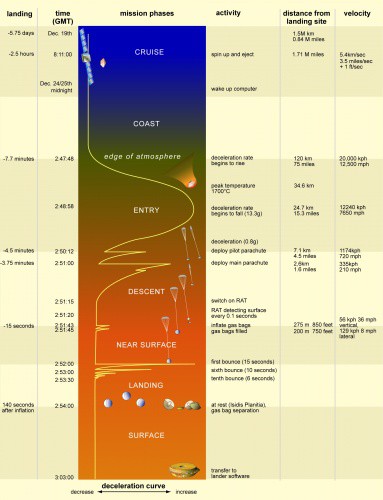Beagle 2 found on Mars
A lander thought to be lost on Mars since 2003 has been found on the surface of the planet.

The UK-led Beagle 2 Mars Lander has been found partially deployed and indications show that the Entry, Descent and Landing (EDL) sequence for the spacecraft worked, and it successfully touched down on Mars on Christmas Day 2003.
Beagle 2, which travelled to Mars on ESA’s Mars Express mission, was a collaboration between industry and academia with thte main aim of delivering world-class science from the surface of the Red Planet.
According to the UK Space Agency, images taken by the HiRISE camera on NASA’s Mars Reconnaissance Orbiter (MRO) and initially searched by Michael Croon of Trier, Germany, a former member of ESA’s Mars Express operations team at ESOC, have identified clear evidence for the lander and evidence for key entry and descent components on the surface of Mars within the expected landing area.

Since the loss of Beagle 2 following its landing on Christmas Day 2003, Croon has, in parallel with members of the Beagle 2 industrial and scientific teams, been screening images from HiRISE to look for signs of Beagle 2.
Register now to continue reading
Thanks for visiting The Engineer. You’ve now reached your monthly limit of news stories. Register for free to unlock unlimited access to all of our news coverage, as well as premium content including opinion, in-depth features and special reports.
Benefits of registering
-
In-depth insights and coverage of key emerging trends
-
Unrestricted access to special reports throughout the year
-
Daily technology news delivered straight to your inbox










Water Sector Talent Exodus Could Cripple The Sector
Maybe if things are essential for the running of a country and we want to pay a fair price we should be running these utilities on a not for profit...